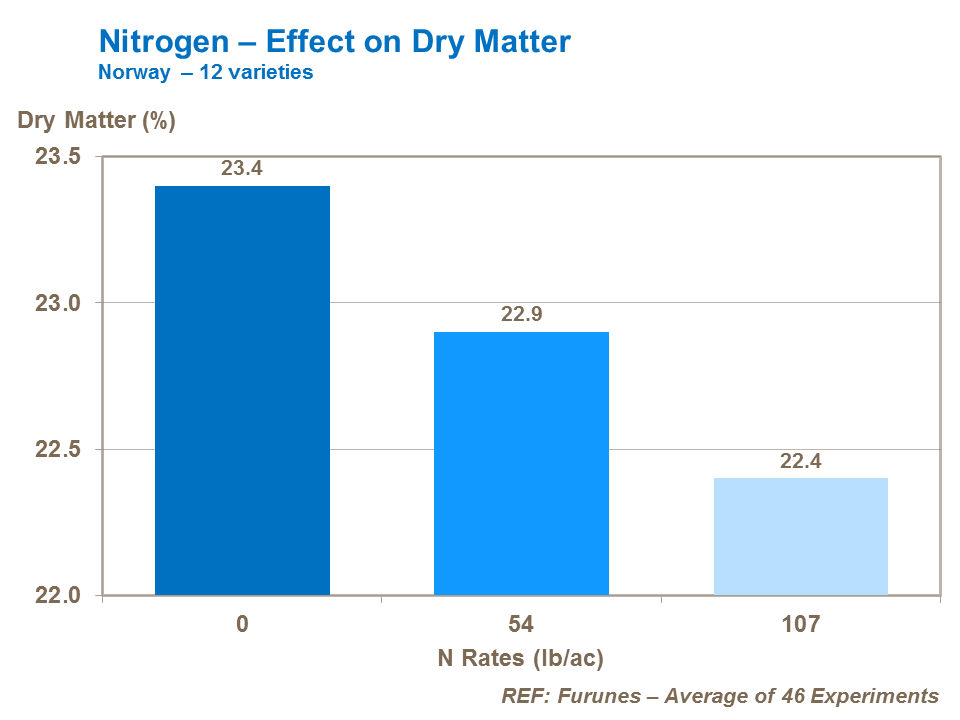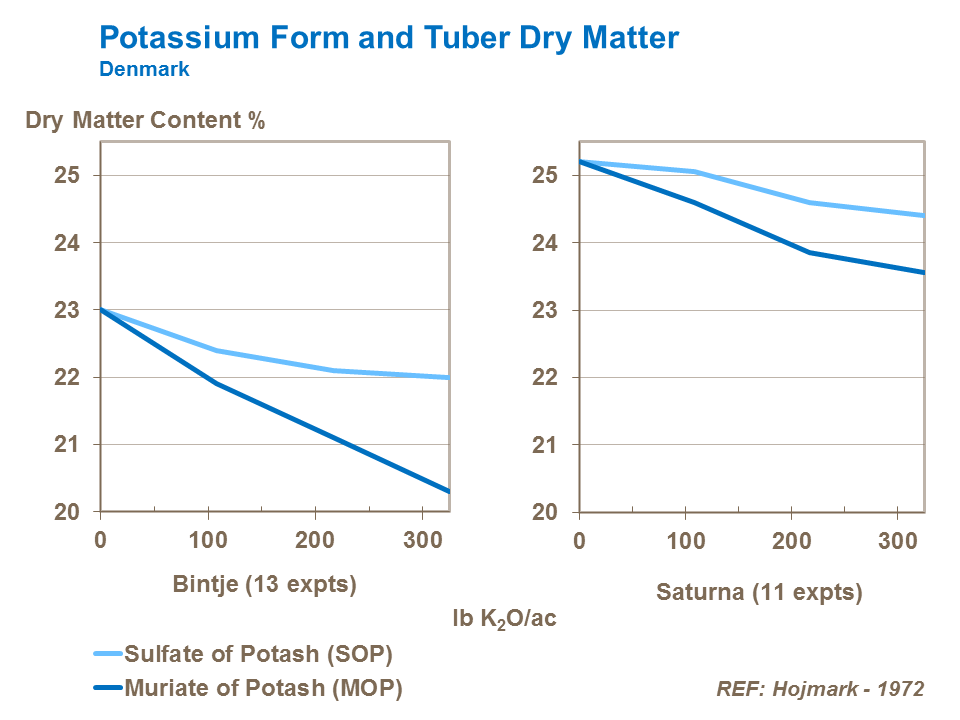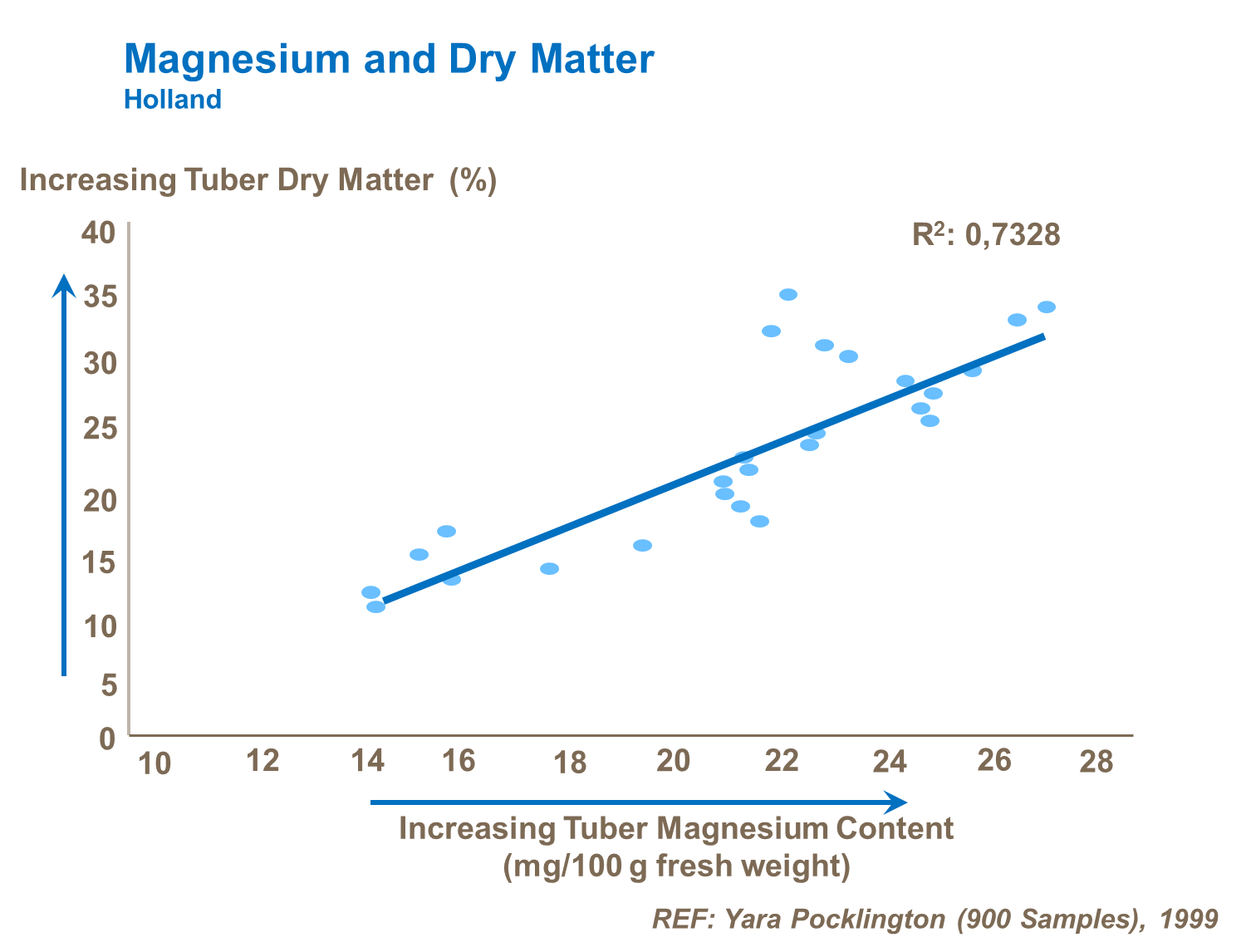Dry matter content is important for both fresh markets and processing. Tubers with dry matter above 18 to 20 percent tend to be more susceptible to bruising and tubers disintegrate more readily when cooked.
However, for processing high dry matter content is required to achieve a good fry Color and often 20-25% is specified. Nitrogen, potassium and magnesium can all have influences on tuber dry matter content.
Crop Nutrition and Potato Tuber Dry Matter Content
Nitrogen
Nitrogen is an essential nutrient to fuel canopy growth, however in temperate climates, an excess supply of nitrogen at later stages of growth will keep the crop growing, delaying maturity and may reduce starch and dry matter content, reducing processing potato crop quality.
This trial in Norway demonstrate that too much late nitrogen can reduce tuber dry matter.

Too much late growth in cool climate crops can also result in a crop with many 'oversize' potatoes and cause internal cracking.
Potassium
The form of potassium has an effect on dry matter. Sulfate of potash (potassium sulfate) can achieve higher dry matters than muriate of potash (potassium chloride) and therefore is frequently the preferred form for processing potatoes. This is due to the chloride in the muriate of potash having a negative effect on tuber dry matter content.
The study from Denmark demonstrates the higher dry matter content achieved with SOP (potassium sulfate) rather than MOP (potassium chloride).

Magnesium
Low levels of magnesium will reduce the starch content of tubers and trials have confirmed the positive benefits of magnesium on tuber dry matter and specific gravity.

Other Crop Management Practices Influencing Dry Matter Content
- Selecting the right variety to meet dry matter production needs
- Selecting quality seed with less risk of disease
- Avoiding fields with adverse factors such poor drainage or low water holding capabilities
- Ensuring blight spray programs are effective
- Scheduling irrigation to maximize quality characteristics
- Harvesting early, thereby minimizing late disease ingress or tuber deterioration